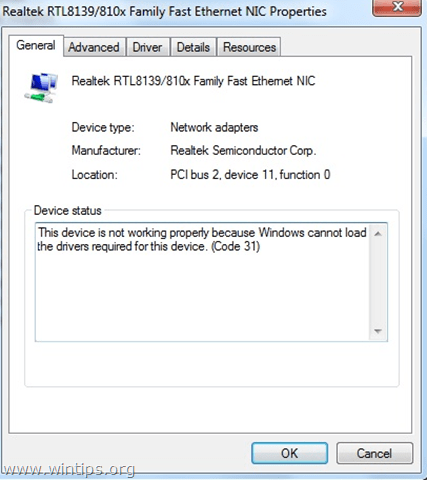
- #Killer e2200 gigabit ethernet controller no connection software
- #Killer e2200 gigabit ethernet controller no connection Pc
It also happens to be one of the first to feature the Killer E2500 controller, with Gigabyte and other vendors expected to follow before year's end. Heading to stores in the next few weeks at a yet-to-be-confirmed price, MSI's feature-packed Z170 motherboard is a stylish choice with reinforced PCIe slots, support for SLI and CrossFire, Nahimic-powered audio, USB 3.1 Type-C, and the popular Click BIOS 5. To put the new chip through its paces, we've been sent an MSI Z170A Gaming M6 for evaluation. Going by what's on the tin, it's a product that makes sense for just about anyone who plays online games, streams multimedia content or uses the Internet for any number of bandwidth-intensive tasks.
#Killer e2200 gigabit ethernet controller no connection software
Introduced as a successor to the well-received E2400, the new addition to the Killer range uses a familiar combination of hardware and software to identify and prioritise network data, resulting in a smoother overall web experience. That's how Rivet Networks has chosen to market its latest Gigabit Ethernet Controller, the Killer E2500. Although, and I do want to stress this once more, the issue is nearly certainly one with the cabling somewhere between your Ethernet jack on your machine, and the Ethernet jack for your modem.The ultimate online experience: faster games, smoother videos, and more control than ever before.
#Killer e2200 gigabit ethernet controller no connection Pc
If all of these fail, then likely the Ethernet connector on the mainboard has an issue and you would need to check with your PC manufacturer (or mainboard manufacturer, if you assembled the machine yourself) on what your warranty or RMA options are. If possible, use a port that is proven capable of working at Gigabit speeds with another machine. Try different ports on your access point (hub, switch, router). If you are having issues achieving Gigabit speeds and you have Cat 5e cables in the mix then it is safe to assume that those specific Cat 5e cables are not Gigabit capable. If you have only tried a Cat 5e cable, you owe it to yourself to try a Cat 6 cable. It doesn't take much physical trauma for a Cat 5e cable to revert to 100 Mbps, and many of the cheaper ones don't support 1 Gbps out of the bag, even though they will be labeled as supported 1 Gbps connections. Cat 6 remedies this issue, and making sure that all of your cabling is Cat 6 or better is usually a surefire way to achieve a gigabit connection.Ī "failed" Cat 5e or Cat 6 cable will usually still work at 100 Mbps. It is best to bypass any Ethernet wall jacks unless you can be absolutely that they are all Cat 6 compatible, with Cat 6 cables in the wall.Ĭat 6 is preferred to Cat 5e as, although the latter is technically capable of gigabit connections, it lacks any redundancies in grounding, which is an extremely common point of failure in network cables. Be sure to include any places where you are plugging any of your networking equipment, including your computer, into the wall. Also make sure that all of your other networking equipment is gigabit capable If you can't be sure that all of the cabling is proven Gigabit capable, swap with a Cat 6 or better cable. Make sure all cabling between your machine and the router is Cat 6 and, if possible, proven capable of working at Gigabit speeds with another machine. Power cycle your access point (hub, switch, router) and any other device between your machine and the access point.Ģ. You can further troubleshoot this by trying different combinations:ġ.


That said, all adapters are different and handle shorts or issues with cables or ports differently, but a Gigabit adapter reporting as 100 Mbps is almost certainly a physical issue with the networking equipment. This includes all cabling between the machine and the router - including any cabling in, before, and after any switches, or on the other side of any wall jacks. This is a very, very common occurrence when troubleshooting Gigabit Ethernet, and it nearly always comes down to one Cat 5e cable being the culprit.

Even if you firmly believe that your Ethernet cable is perfectly fine, and even if this cable worked fine before, swapping it out for another, proven cable, or a brand new Cat 6 cable, will almost certainly solve the issue with a minimum of troubleshooting and headache. If this is set correctly and you are still having the issue then it could be a couple things, although it is important to note up front that this is almost always an issue with an Ethernet cable. Auto-Negotiate is the correct setting for Gigabit speeds with our adapters. This option is under the Advanced tab of the adapters properties, just right click the adapter and choose properties. From the Device Manager, you can check to see that the Killer adapter is set on Auto-Negotiate. The only setting that is of concern for a gigabit connection is that the adapter is set to Auto-Negotiate. We're sorry to hear that you're having troubles with your new Gigabit connection!


 0 kommentar(er)
0 kommentar(er)
